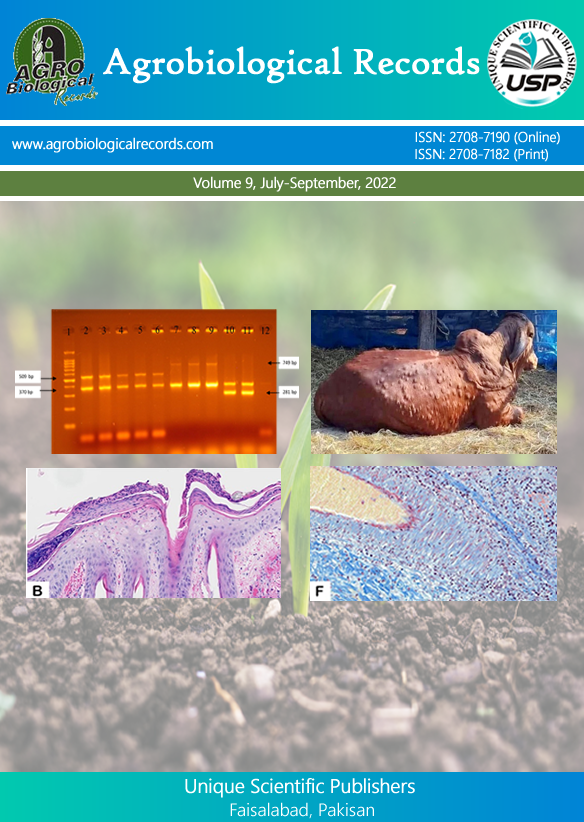
Sumbal Iqbal1, Muhammad Javed1, Sidra Abbas2,*, Amber Iqbal1, Saba Asif1 and Sikandar Hayat3
1Department of Zoology, Wildlife and Fisheries, University of Agriculture, Faisalabad-38040, Pakistan; 2Department of Zoology, University of Jhang, Jhang-35200, Pakistan; 3Institute of Molecular Biology and Biotechnology, the University of Lahore, Lahore, Pakistan
*Corresponding author: sidraabbas39@gmail.com
Heavy metal-containing industrial effluents, primarily discharged illegally, are the primary cause of water contamination, posing a significant threat to aquatic life and water quality. To address this issue, the acute toxic effects of water-borne copper were evaluated in terms of the 96-hour median lethal concentration (LC50) and lethal concentrations for the carnivorous fish species Wallago attu. A static bioassay was performed separately with three replications, while the total hardness was maintained at 250mg/L. Fish mortality was observed in conjunction with water quality variables (pH, temperature, total hardness, total ammonia, carbon dioxide, dissolved oxygen, calcium, magnesium, sodium, and potassium) at 12-hour intervals. The results, computed using Probit analysis with a 95% confidence interval, revealed significant differences in the LC50 and lethal concentration values of copper for the fish. The value computed for the 96-hour LC50 was 27.08±0.63mg/L, while the lethal concentration was 47.48±2.77mg/L for Wallago attu. Hence, the study found a significant increase in total ammonia and carbon dioxide concentration with increased metal exposure, with total ammonia showing a direct relationship with carbon dioxide. At the same time, dissolved oxygen had an inverse relationship. This indicates a negative relationship between carbon dioxide and dissolved oxygen.